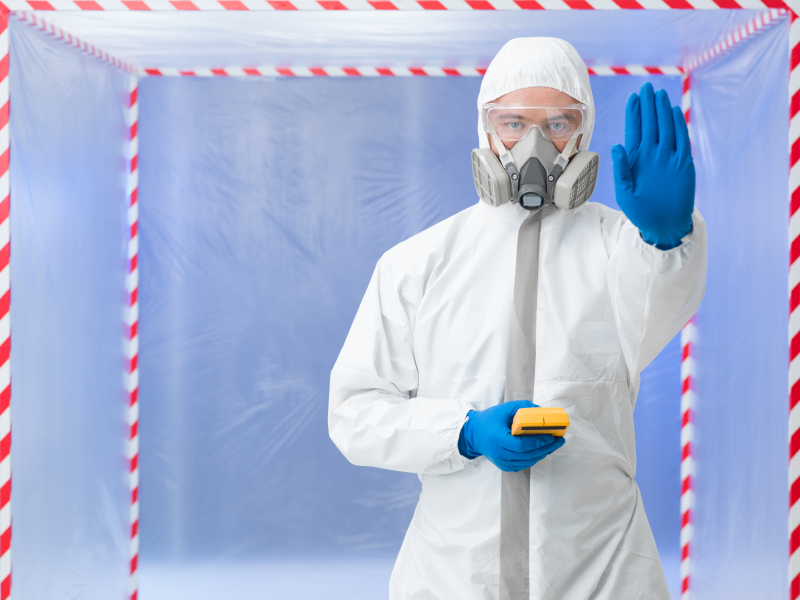Nanoscale applications are rapidly moving from the research lab to industrial and commercial settings. According to the Occupational Safety and Health Administration (OSHA), examples of workplaces that may use nanoscale materials (nanomaterials) include chemical or pharmaceutical laboratories or plants, manufacturing facilities, medical offices or hospitals, and construction sites. Yesterday we explored nanomaterials hazards and ways to determine if your workplace has nanomaterials. Today we will offer steps to protect workers who handle nanomaterials.

|
A ‘nano’ scenario
One of your workers develops some throat irritation, nasal congestion, postnasal drip, facial flushing, and skin reactions to earrings and a belt buckle. That actually happened to a young chemist who was working, unprotected, with nickel nanoparticle powder. Through a few tests, the chemist was later found to have a positive reaction to nickel. Previously, the worker had shown no sensitivity to nickel.
Scientists who studied the case determined that it would be “reasonable and prudent” to assume that nanoscale nickel — with a greater absolute particle number per gram and a greater total specific surface area — would be more potent than just microscale nickel, with which the chemist had previously worked. The authors of the study pointed to the importance of conducting a new hazard assessment when nanoscale constituents are first introduced into the workplace.
Steps to protect your workers from nanomaterial hazards
Nanomaterials are either already in your workplace or will likely be there soon. There are steps you can take to protect your workers from hazards associated with nanomaterials.
Step 1. Scale up your training. Make sure that the information and training you provide your workers includes the identification of nanomaterials you use; results from exposure assessments; identification of engineering and administrative controls and personal protective equipment (PPE) to reduce exposure to nanomaterials; the use and limitations of the PPE; and emergency measures to take in the event of a nanomaterial spill or release.
Step 2. Institute engineering controls, including working in ventilated enclosures equipped with high-efficiency particulate air (HEPA) filters capable of trapping and retaining at least 99.97 percent of 0.3 micrometer diameter monodispersed particles. If ventilated enclosures are not possible, provide local exhaust ventilation (e.g., capture hood, enclosing hood) equipped with HEPA filters and designed to capture the contaminant at the point of generation or release.
Step 3. Provide hand-washing facilities and information that encourages the use of good hygiene practices.
Step 4. Provide workers with appropriate PPE such as respirators, gloves, and protective clothing. OSHA says to use HEPA filter equipped air-purifying respirators as specified by 29 CFR 1910.134. According to OSHA, the equivalent NIOSH 42 CFR 84 particulate filters are the N100, R100, and P100 filters.
Step 5. Establish procedures to address cleanup of nanomaterial spills and decontamination of surfaces to minimize worker exposure. For example, prohibit dry sweeping or use of compressed air for cleanup of dusts containing nanomaterials. Use wet wiping and vacuum cleaners equipped with HEPA filters.
Step 6. Make available medical screening and surveillance for workers exposed to nanomaterials, if appropriate.
Step 7. Review medical surveillance requirements under OSHA standards.
Step 8. Limit the spread of contamination by wet wiping and HEPA vacuuming.
Step 9. Use extreme care when cleaning up spills. Exposure to nanoparticles in liquid dispersion should have a lower exposure potential for inhalation, but it has the potential for skin exposure. If the hazard of the nanomaterial is high or unknown, use very conservative engineering controls to limit exposure to the nanomaterials. If the hazard of the nanomaterial is low, use reasonable precautions to limit skin exposure to the liquid. Cleanup of dry nanopowder nanomaterials exposes workers to the potential for highly concentrated exposure to “free” nanomaterials. Use very conservative engineering controls to limit inhalation exposure.
Step 10. Post areas where nanomaterials are manufactured, stored, and used.
Step 11. Label containers of engineered nanomaterials in accordance with your Chemical Hygiene Plan.
Step 12. Minimize waste generation, where possible, and carefully track and document nanoparticle wastes.
More and more workplaces are increasingly affected by the growing prevalence of nanomaterials. Be sure to check Safety.BLR.com® for tips and tools for training workers for the multitude of hazards in the workplace.
